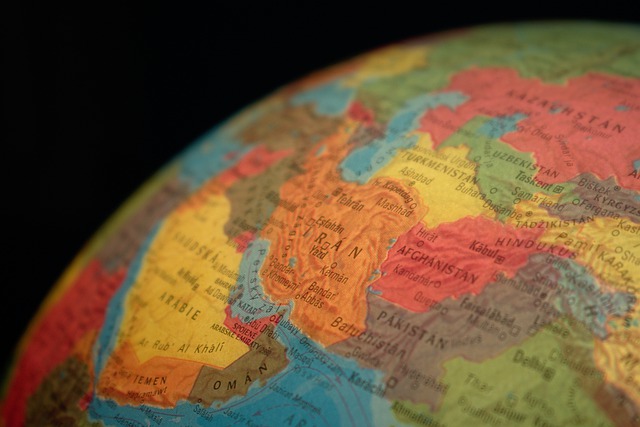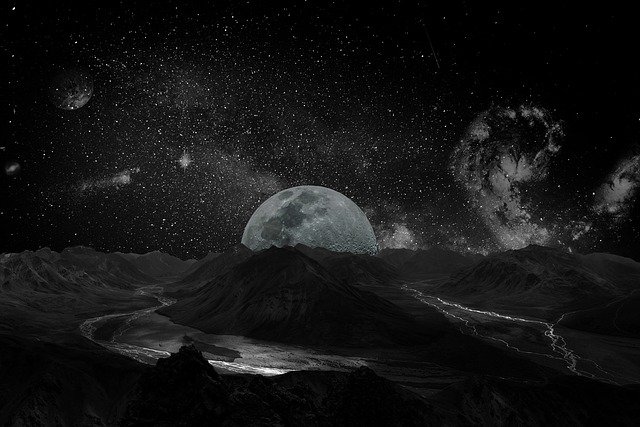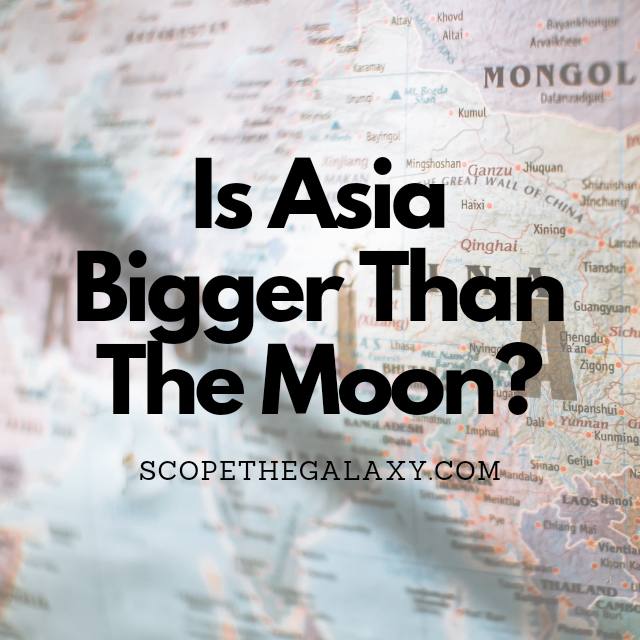*This post may contain affiliate links. This means we may make a commission if you purchase an item using one of our links*
Although Asia is bigger when you take into account the oceans that surround it; with a diameter of 11,000km and a surface area of 44,579,000 square km as opposed to the Moon’s lesser numbers of 4,742km and surface area of 37,940,000 square km, in terms of overall cubic volume, the moon’s volume of 21.9 cubic km absolutely dwarfs Asia’s lesser volume of 2.78 cubic km.
For a more detailed look at each of these rocky plains along with the features that make them as big as they are, continue reading as it will be covered more thoroughly below.
How Big Is The Continent Of Asia?

Asia is the biggest continent on Earth, covering an area of 44,579,000 square kilometers, equal to 30% of the total land area of Earth or 8.7% of the planet’s total surface area. Asia possesses the highest and lowest points on Earth’s surface, plus it has the longest coastline of any continent.
Asia contains two of the three largest countries in the world: Russia and China, and it holds roughly 60% of the world’s population, with around 4.7 billion people.
We can divide Asia into five major physical regions: mountain systems, plains and deserts, plateaus, saltwater areas, and freshwater environments. Among the most impressive geographic features of the continent are the Himalayas, which extend 2,500km across the Southeast and separate the Indian subcontinent from the rest of Asia.
The Himalayas cover over 612,000 square kilometers of land; they are so vast that they contain three different mountain belts: the Greater Himalayas, Lesser Himalayas, and Outer Himalayas. The Greater Himalayans possess the highest average elevation at 20,000 feet. It also contains nine of the world’s highest peaks, which are all over 26,000 feet tall.
Asia boasts the highest mountain in the world, Mount Everest, which stands at 29,032 feet. The continent also possesses several plateaus, including the vast Iranian plateau, which covers more than 3.6 million square kilometers.
Meanwhile, the West Siberian Plain of central Russia is one of the largest continuous flatlands in the world. This plain has a length of 2,400 kilometers and a width of 1,900 kilometers; over 50% of its total area is lower than 100 meters above sea level.
Asia extends to a length of 11,000km between the Arctic Circle and the Indian Ocean; its width of 8,500km stretches from the Ural Mountains to the Pacific Ocean.
Lastly, if we were to say that the average thickness of Asia’s crust fell around 40km, it would have a volume of 2.78 cubic kilometres. This makes it larger still and a significant amount more than all the other continents present on Earth.
How Big Is The Moon?

We see the moon shining each evening; still, it is difficult to quantify precisely how large this celestial body is when we are so far away from it. The moon appears round, but like the Earth, it is not a perfect sphere. Instead, it is an oblate spheroid (or a slightly squashed ball).
Due to its shape, the diameter at the equator is larger than the measure from pole to pole. However, the difference – a tiny 4 kilometers – is pretty insignificant when we look at the overall size of the moon. The Moon’s equatorial diameter is 3,476km, or if we measure pole to pole, it is 3,472km.
Either way, the moon’s diameter is over 1,000km more than the continent of Asia from east to west or from north to south but, when the measurement is done from the Arctic Circle to the Indian Ocean, Asia’s diameter is a little over 3 times that of the Moon
When we look at the surface area, we see the moon is actually far lower; the surface area of Asia is approximately 44,579,000 sq km, while the moon’s surface area is around 37,940,000 sq km, making it almost 7 million less.
however, if you simply look at this natural satellites volume, it completely outclasses Asia’s number, where it is 21.9 cubic kilometers, more than 5 times Asia’s numbers of 2.78 cubic kilometers
If you look at the moon, you’ll see a mixture of dark areas, representing the extensive flat lunar plains, and bright regions full of mountainous highlands. During early observations, scientists thought that the dark areas were full of water, but today we know that no liquid water is available on its airless surface.
On Earth, mountains form by volcanic or tectonic action. In contrast, the mountainous ranges on the moon formed almost exclusively from crater impacts. Here, mountains are labeled using their Latin names; montes (mountain ranges) and mons (individual mountains).
The two most significant mountain ranges are the northern Montes Caucasus and the southern Montes Apenninus; they separate the Sea of Serenity from the Sea of Showers. In the northwest, the Montes Alpes – or the lunar Alps – encase the Plato crater.
Among the most impressive single peaks on the moon are Mons Piton and Mons Pico. Mons Piton has a base diameter of 25 km and stretches 2,250m into the area. Mons Pico has a 15 km by 25 km base and a height of 2,400m. While these mountains are impressive, they are dwarfed by some of Earth’s mountain peaks, like Everest.
Summary
Asia may house the two biggest countries on our planet, in Russia and China and may even have a surface area roughly 7 million square kilometers more than the Moon but, when taking into account our natural satellites spherical shape, it still comes out as the bigger off two.

